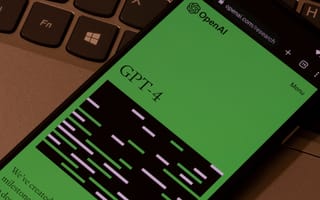Just four months after setting off a chatbot craze with the launch of ChatGPT, artificial intelligence company OpenAI has once again set the tech world ablaze with the launch of GPT-4. This new language model is said to be more powerful than the GPT-3.5 model used in ChatGPT, according to OpenAI.
Similar to GPT-3.5, GPT-4 was trained by data — and reinforced with human feedback — to predict the next word in a document. GPT-4 was informed by more data and computation than GPT-3.5, creating a model that is more reliable, creative and capable of handling more nuanced instructions, according to OpenAI’s website.
GPT-4 can be accessed through OpenAI’s paid ChatGPT Plus subscription, as well as Microsoft Bing’s AI chatbot. The technology has also been integrated into software platforms, like Duolingo and Stripe.
Perhaps the biggest improvement over its predecessor is GPT-4’s ability to understand images and make logical deductions about them. For example, when presented with a photo of helium balloons and asked what would happen if the strings were cut, GPT-4 accurately responded that the balloons would fly away.
GPT-4’s image input feature is not currently available to the public. That capability is being tested by the vision assistance app Be My Eyes, which is using the technology to identify objects for people who are blind or have limited vision.
In terms of text generation, GPT-4 is much more prolific than GPT-3.5. According to OpenAI, GPT-4 can generate 25,000 words, which is more than eight times the 3,000 words generated by ChatGPT.
GPT-4’s performance was also evaluated with academic tests. GPT-4 scored in the top 10 percent of the bar exam, according to OpenAI, whereas the initial version of ChatGPT scored in the bottom 10 percent.
GPT-4 was also able to pass most Advanced Placement exams for high school students — with the exception of two English composition tests. GPT-4 performed significantly better than GPT-3.5 in calculus, chemistry and macroeconomics, according to the OpenAI website.
In another example of its more advanced capabilities, OpenAI’s website shows how GPT-4 was able to come up with a meeting time that accommodates the limited availability of three different people. ChatGPT, by comparison, provided a meeting time that conflicted with one person’s calendar.
GPT-4 is already being used by a number of software companies. Duolingo is using GPT-4 to provide an AI-powered conversation partner that can discuss a wide range of topics. Duolingo is also using GPT-4 to explain a user’s mistakes to them.
The product team at payment platform Stripe has also been using GPT-4 to answer developers’ questions and crawl its users’ websites to gain more information about their businesses.
Companies who want to integrate GPT-4 via API can sign up on a waitlist.
OpenAI said GPT-4 was built with safety in mind, and that developers have built-in guardrails around adversarial usage, unwanted content and privacy concerns. Still, though, the company acknowledges GPT-4’s limitations, such as social biases, making up facts and gullibly accepting false statements made by users.
“GPT-4 and successor models have the potential to significantly influence society in both beneficial and harmful ways,” OpenAI stated on its website. “We are collaborating with external researchers to improve how we understand and assess potential impacts, as well as to build evaluations for dangerous capabilities that may emerge in future systems.”




